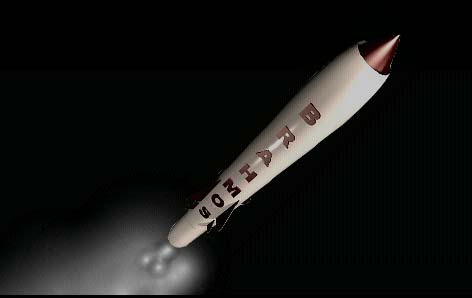Air-to-surface variant of BrahMos in 2012: Dr Sivathanu Pillai
31 Jan 2011
Chennai: The much talked-about air-to-surface variant of the tri-sonic BrahMos cruise missile should be ready for induction into the Indian Air Force by 2012, and this tri-sonic missile would soon be followed by a hypersonic version, according to Dr A Sivathanu Pillai, chief executive officer of BrahMos Aerospace.
Dr Pillai also confirmed that work had begun on the hypersonic version which would be capable of attaining speeds in the range of Mach 7.
Addressing media persons at the Chennai Science Festival on Sunday, Dr Pillai said, ''Work has already commenced on designing a hypersonic missile in collaboration with Russia. It would be able to achieve speeds of Mach 7.'' As chief controller of the Defence Research and Development Organisation (DRDO), Dr Pllai is also one of the senior most scientist and official of this premiere defence agency,
Dr Pillai pointed out that the BrahMos missile packs in nine times more destructive capacity than any other cruise missile of its class in the world. Much of the missile's blast impact is due to the high velocity that it achieves, which translates into high kinetic energy.
He also said the capability to travel at three times the speed of sound or Mach 3 allowed the missile to cover a kilometre in a second.

Delivering a talk on 'Science in Indian defence' at the science festival, he provided the audience, consisting largely of school students, a guided tour of India's Integrated Guided Missile Development Programme (IGMDP).
He gave a historical account of the reasons behind the development of the ballistic missile programme that consists of a family of five missiles – the strategic Agni series, the theatre class Prithvi, the air defence Akash and Trishul and the anti-tank Nag.
He also provided his audience, in particular the female members, an interesting insight into India's missile programme while describing the projectile and re-entry mechanism of a missile. He said that a special composite material had to be developed to construct the nose cone of a missile as it had to withstand temperatures as high as 3,000 degree Celsius during re-entry into the atmosphere.
''It was a woman scientist called G Rohini Devi, who developed the carbon-carbon composite which is used in every Indian missile in operation today,'' Dr Pillai said. ''Young girls in the audience must become like her,'' he said.
Designing the carbon-carbon composite material involved massive amounts of mathematical calculation, but India had only one American- built supercomputer in 1986 and it was used for weather prediction. To take forward the nascent missile programme, a supercomputer was indigenously developed within 24 months, said Dr Pillai.
The parallel processing supercomputer was designed by 14 young college graduates.













.jpg)






.jpg)









